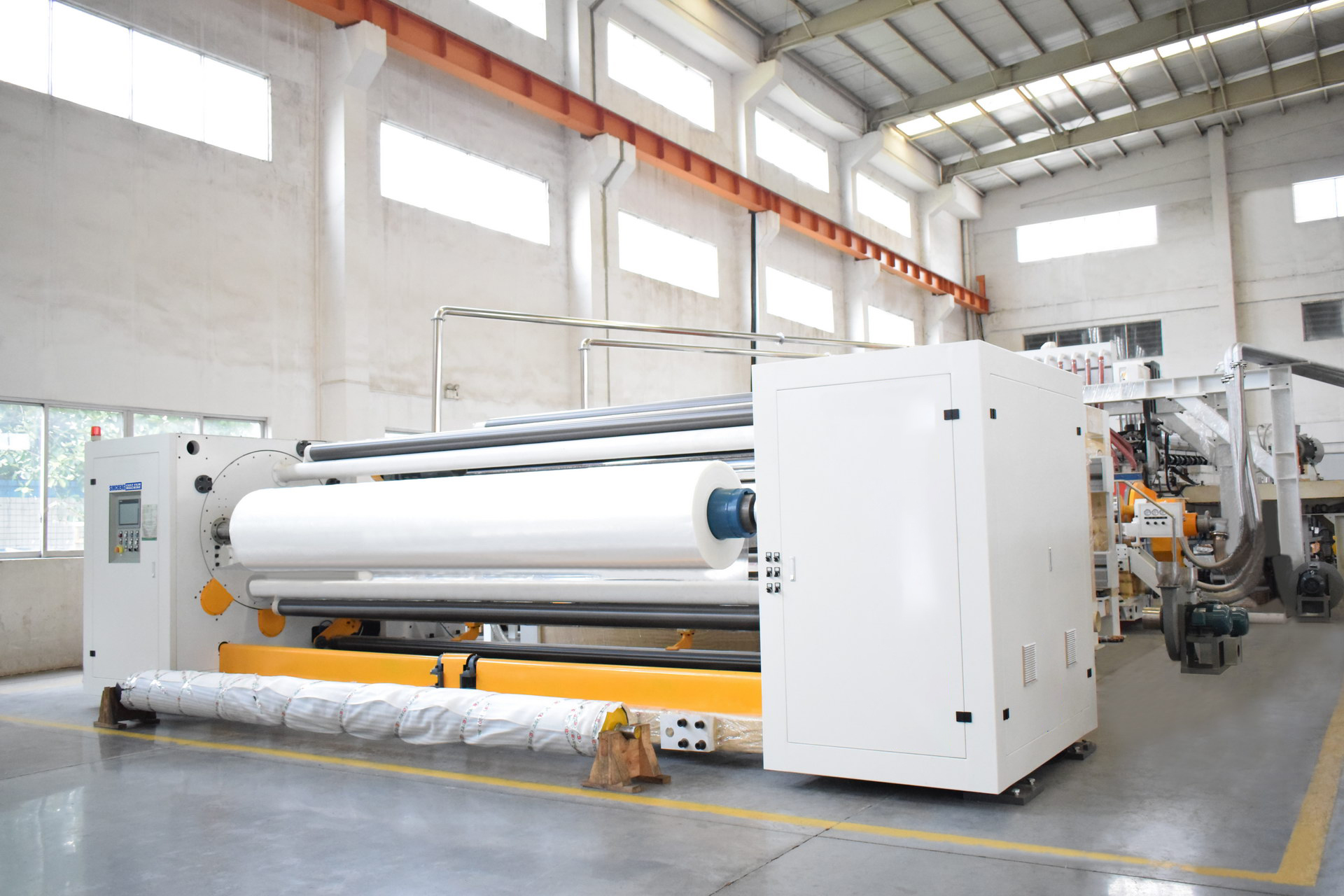Plastic film is a kind of plastic product widely used in packaging, agriculture, construction, and other fields. It is lightweight, flexible, transparent, water-resistant, acid- and alkali-resistant, and has good moisture-proof, dust-proof, freshness preservation, heat insulation, and other functions. Currently, the mainstream plastic films on the market are mainly polyethylene (PE), polypropylene (PP), polyvinyl chloride (PVC), and so on.
Polythene film is one of the most widely used plastic films in the market today. It is characterized by good flexibility, high transparency, and high corrosion resistance.
According to the different densities of polyethylene, polyethylene film is further divided into high-density polyethylene film (HDPE) and low-density polyethylene film (LDPE). HDPE film has high strength and hardness, and is suitable for packaging materials and agricultural mulching film and other fields; LDPE film is flexible and suitable for food packaging and rubbish bags and other fields.
The production process of polyethylene film mainly includes the extrusion method and the blown film method. According to the different film processing techniques, it can be classified into several types, such as blown film (IPE), cast film (CPE), and low-foaming film.
PE film’s tensile strength and openness are better than CPE film, using the front printing, can be used for food bags, garment bags, etc.; CPE film thickness uniformity, surface gloss, transparency, and heat sealing than PE is better, can be printed on the front and back, but the production cost is high. CPE film is mainly used as a composite bag of the inner layer, as well as cosmetics, sauces, and pastries of packaging; the low-foam film is decorative, thick, not easy to stretch and deform, using the front printing, used for New Year’s paintings, trademarks and handbags. Low-foam film is good for decoration, thick texture, is not easy to stretch and deform, and is printed on the front side, and used in New Year’s paintings, trademarks, and handbags.
PE film in the field of packaging is the most widely used and can be used for food packaging, electrical product packaging, daily necessities packaging, clothing packaging, and so on. They have a common point, that is, the plastic film is for color printing, as food packaging but also for multi-layer composite and other process operations.
However, PE film is prone to crystal spots, and white powder precipitates have always been a clichéd problem, which is the most common in film production, but also the most headache. Many film manufacturers have been affected by film precipitates that affect subsequent printing, as well as the quality of the final product.
Although crystal point problems are common, they are not easy to solve. This is mainly because there are so many factors that can cause crystal point problems. If the cause of crystal pitting is not clear, it is difficult to take measures to improve or solve it. Therefore, we first need to understand the causes of crystal pitting, which is caused by the following five conditions:
- Foreign contaminants
- Poor plasticisation
- Crosslinking after aging/oxidation
- Carbonisation of the material during processing, resulting in “carbon deposits in the mouth mold”.
- Additive precipitation, etc.
Slip agents for PE films are usually oleic acid amide or erucic acid amide, and the toning function requires that they precipitate on the surface of the film, otherwise there will be no slip. Smooth agent because it is added, not grafted on the PE molecule, film processing, with the passage of time and temperature changes, the smooth agent will be from the film surface layer of the inner membrane to the outward migration oozing. Careful observation will be found to be a very thin layer of powder or wax-like material, the longer the time, the more migration. When the smooth agent precipitation is more serious, not only affects the work of the automatic packaging machines, but also affects the printing suitability, composite strength, and pollution of the packaged goods.
Subverting the tradition, researching, and innovating, the SILIKE SILIMER series Non-migrating Permanent Slip Additive For Flexible Packaging perfectly solves the problem of white precipitates, At the same time, this Non- precipitation slip agent can also assist PE film manufacturers in solving crystallization point issues during production.
SILIKE’s dedicated R&D team has successfully tackled these issues with the development of a groundbreaking non-Blooming Super-slip & anti-blocking Masterbatch Additives – part of the SILIMER series, which effectively solves the shortcomings of the traditional slip agent, Non-migratory across film layers, ensuring stable and long-lasting slip performance, which brings great innovation to the Plastic Film Flexible Packaging Industry industry. This breakthrough offers benefits such as minimal influence on printing, heat sealing, transmittance, or haze, along with reduced CoF, good anti-blocking, and improved surface smoothness, eliminating white powder precipitation.
SILIMER series Non-precipitating Super-slip & anti-blocking Masterbatch Additives series has a wide range of applications and can be used in the production of BOPP/CPP/PE/TPU/EVA films, etc. They are suitable for casting, blow molding, and stretching processes.
Advantages of SILIKE SILIMER series Non-precipitating Super-slip&anti-blocking Masterbatch Additives:
1.Test data show that small amounts of SILIKE SILIMER 5064MB1, and SILIKE SILIMER 5065HB can effectively reduce the coefficient of friction and have a long-lasting and stable slipperiness regardless of climate and temperature;
2.The addition of SILIKE SILIMER 5064MB1, and SILIKE SILIMER 5065HB during the preparation of plastic films does not affect the transparency of the film and does not affect the subsequent printing process;
3.Adding SILIKE SILIMER 5064MB1, and SILIKE SILIMER 5065HB in small amounts solves the problem that traditional amide slip agents are easy to precipitate or powder, improves the product quality, and saves the comprehensive cost.
Do you want to replace the amide slip agents in your hands? Do you want to replace your amide slip agent for Plastic Film, or do you want to use a more stable and efficient environmental protection slip agent for Plastic Film, SILIKE welcomes you to contact us at any time, and we are looking forward to creating more possibilities together with you!
Post time: Feb-01-2024





